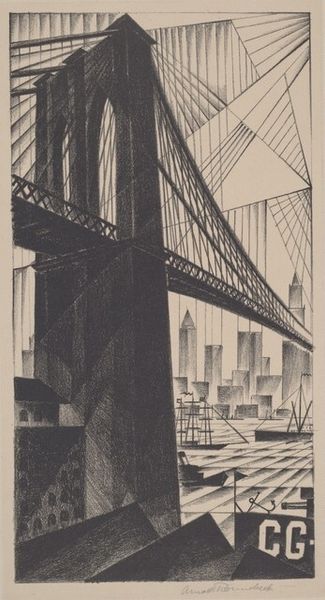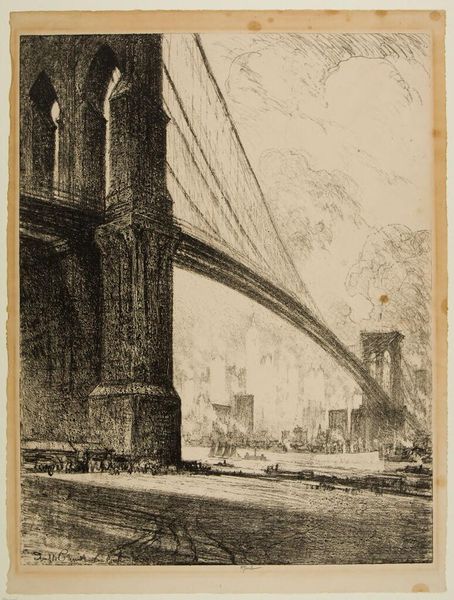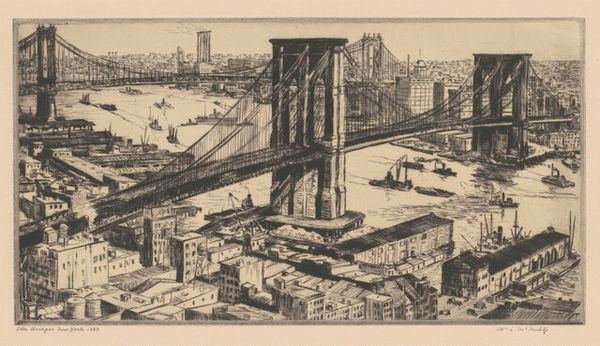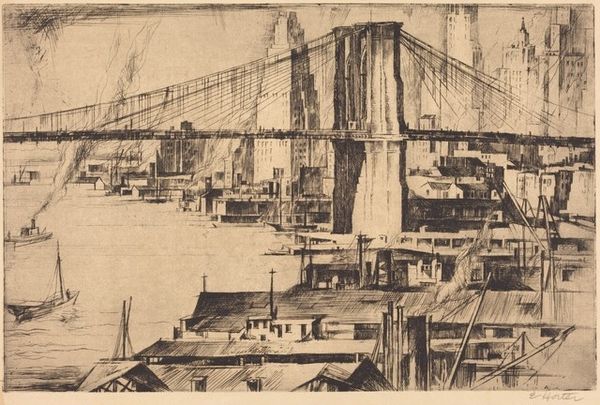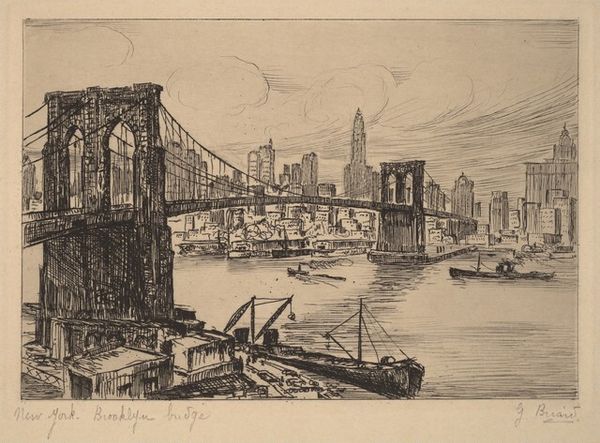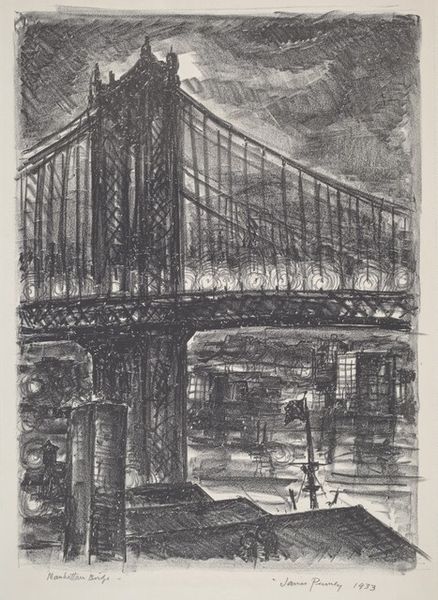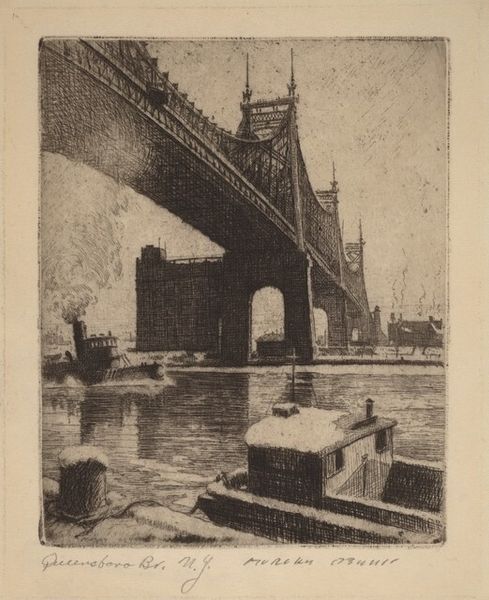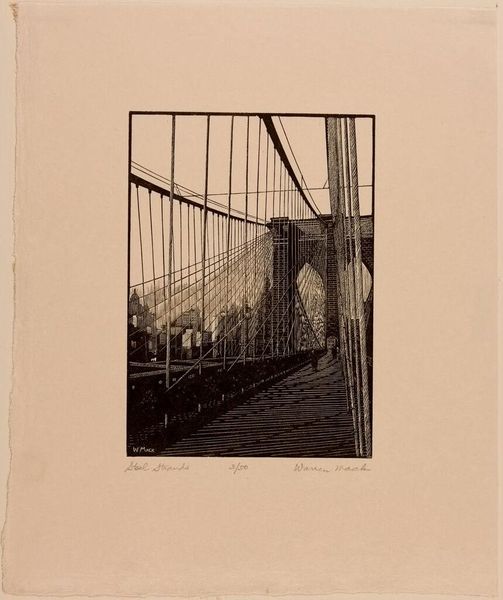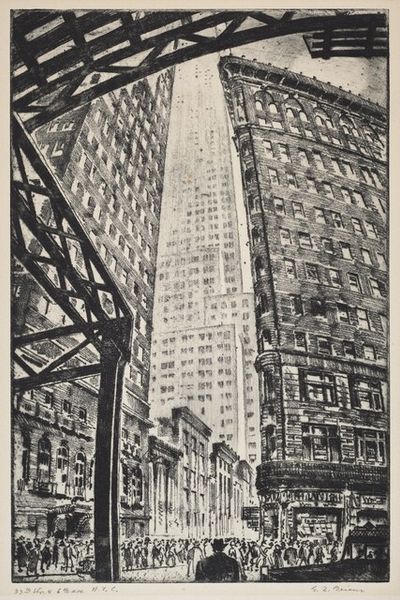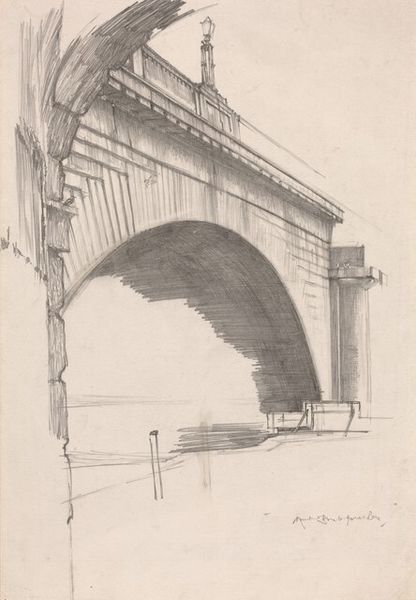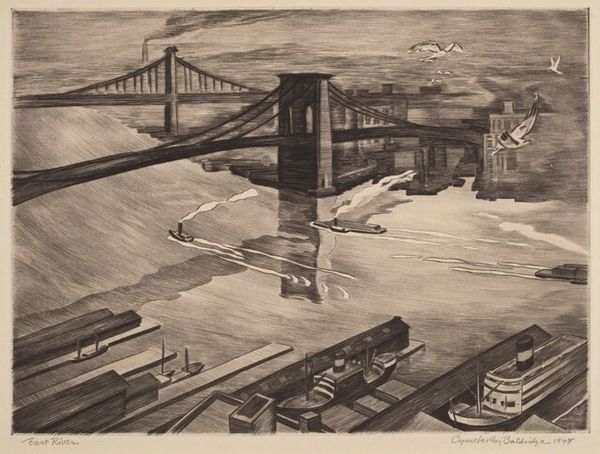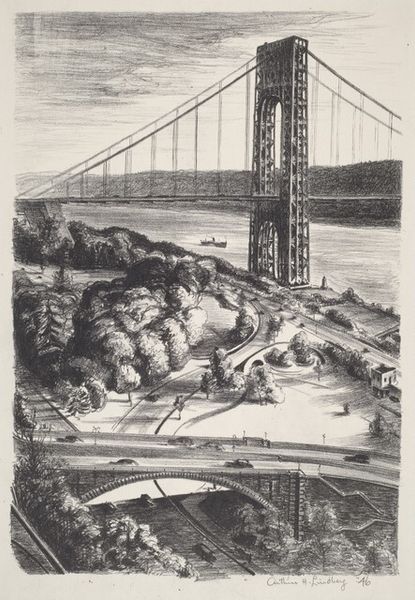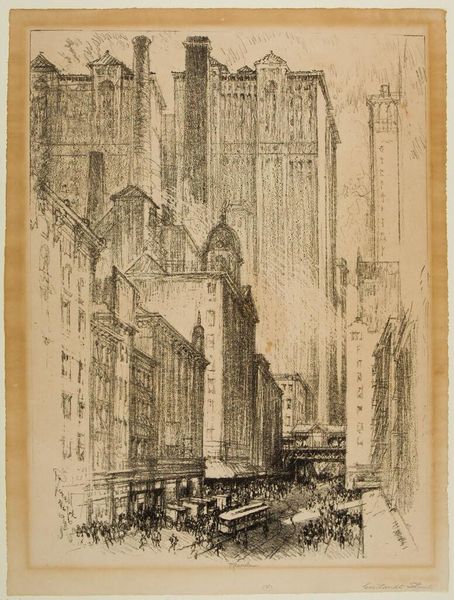
print, etching
# print
#
etching
#
line
#
cityscape
#
modernism
#
realism
Dimensions: Image: 176 x 123 mm Sheet: 452 x 338 mm
Copyright: National Gallery of Art: CC0 1.0
Editor: So, this is Walter Pach's "Brooklyn Bridge" from 1919, made using etching. I’m struck by the contrast between the solid, imposing structure of the bridge and the more delicate, almost fragile lines used to depict it. What does this piece bring to your mind? Curator: The Brooklyn Bridge, especially around 1919, was more than just a piece of infrastructure; it was a potent symbol of American ingenuity and progress, heavily influenced by industry and trade. The fact that Pach chose to depict it in etching, a medium associated with reproduction and accessibility, suggests he saw the bridge not as some distant icon, but as something ingrained in the fabric of everyday life for New Yorkers. Editor: That’s interesting! I was so focused on the visual aspect that I didn't really consider that choice of medium. Do you think the viewpoint that Pach chose is of any significance? Curator: Definitely. He's not giving us a straightforward, celebratory view of the bridge from afar, right? Instead, he situates us among the buildings, almost overwhelmed by its presence. This implies Pach is acknowledging that industrial advancements impact human-scale experience, maybe even dwarfing it. The urban environment is literally and figuratively living in the shadow of this "triumph" of engineering. What feelings does it stir in you to view from this position? Editor: That gives me a different perspective. I had only considered it to be simply representational of its place in the cityscape. Thanks! Now I see how art isn’t made in a vacuum; it’s reflecting societal forces, sometimes critically. Curator: Exactly. And recognizing that interplay allows us to engage with art on a much deeper level.
Comments
No comments
Be the first to comment and join the conversation on the ultimate creative platform.
